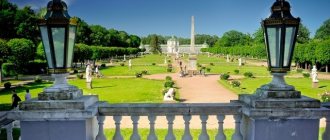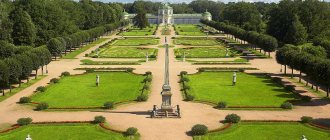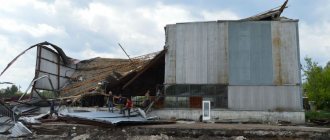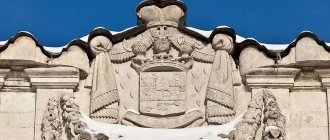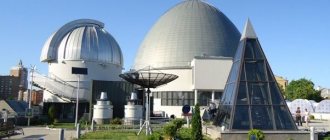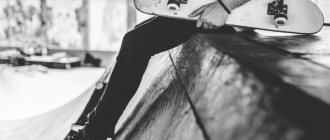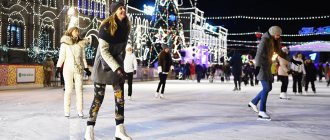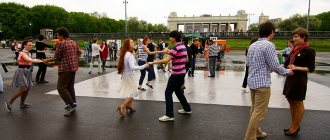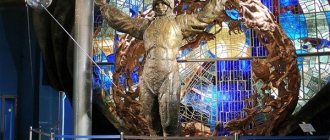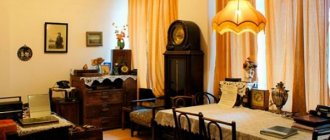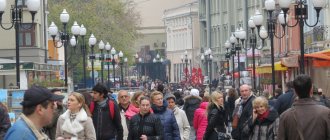+1
The Kuskovo estate in Moscow is a magnificent example of architecture and landscape design of the 18th century. The architectural and park ensemble consists of several parts representing different European styles (English, French, Italian, Dutch). The center of the composition is the palace of Counts Sheremetyev. It has preserved antique furnishings - furniture, decorative items, works of art. There are 2 museums on the estate, attracting numerous visitors.
How to get to Kuskovo? (address)
The Kuskovo estate is located at the address : Moscow, Yunosti Street, building 2, building 1.
You can get there in the following ways - choose which one is more convenient for you:
Metro:
- 1. Ryazansky Prospect metro station, from the metro buses 133 or 208. The stop is called “Kuskovo Museum”;
- 2. Vykhino metro station, from the metro we take bus 620 and go to the Kuskovo Museum stop;
- 3. Novogireevo metro station, from the metro we take trolleybus 64 or 75, or buses 615, 247, 884 and go to the Yunosti Street stop.
By train:
We take the train in the Gorky direction and get to the Kuskovo platform. Next we walk through the Kuskovsky forest park for about 10-15 minutes.
By car:
You can get to the park through Veshnyakovskaya Street or North-Eastern Expressway.
If you are moving along the temporary storage warehouse, look for a sign indicating the exit to Yunosti Street.
There are no turn signs along Veshnyakovskaya Street, so it is better to use a navigator.
Free parking:
If you are traveling to Kuskovo by car, then you can take advantage of three free parking options.
- The first parking option is located directly opposite the entrance to the park on Yunosti Street. GPS coordinates: 55.733292, 37.812504.
- The second option where you can park is in the parking lot near the Dutch House. GPS coordinates: 55.736845, 37.804199.
- The third option is near the Kuskovo platform, GPS coordinates: 55.738980, 37.794578.
In addition to organized parking, you can park along the road, carefully looking at the signs.
All three options are free, however, keep in mind that on weekends it is better to leave early. The parking lots are small and spaces are filled quickly.
History of origin
The Sheremetev count family, one of the richest in the Russian Empire, owned dozens of palaces and estates.
But the most famous Sheremetev family nest is Kuskovo, which in the middle of the 18th century the son of Field Marshal, hero of Poltava, Boris Sheremetev, Pyotr Borisovich (1713–1788), decided to make his ceremonial residence. This was facilitated by the dowry of his rich bride Varvara Cherkasskaya, the daughter of the chancellor.
After his marriage, among other things, the small Kuskovo (hence the name - piece) lands were joined by the neighboring village of Veshnyaki, and Pyotr Borisovich had the opportunity to build his own Versailles near Moscow, where he could receive even the most august persons.
By the way, Catherine, the Polish king and the Austrian emperor visited the estate.
The main place in the estate is given to the summer palace, which was erected by order of the owner of the estate in the traditions of early classicism. The construction work was led by the architect Karl Blank; the main construction took place from 1769 to 1775. The palace building was built of wood, which was later plastered and painted.
The soft pink color of the walls, the elegant decor of the facades, the semicircular pediments, the large size of the numerous windows, the magnificent porch with a ramp - all this emphasizes the ceremonial character of the building.
In front of the main facade there was a huge pond with the prospect of a canal stretching into the distance, along the banks of which a landscape park with hunting grounds and a menagerie was laid out.
Everywhere one could retire to gazebos, which had contemplative names in the spirit of the Enlightenment - “Philosophical House”, “Temple of Silence” and even “Refuge for Good People”.
Around the palace, the architect Kologrivov laid out a French regular park, which has been perfectly preserved to this day, with figured parterres and flower beds, statues of ancient gods and heroes, as well as trees trimmed in the shape of birds, ships or animals.
In addition to the magnificent high society receptions, the Sheremetevs organized open festivities in Kuskovo once a week for everyone with music, fireworks and a parade of a small flotilla, which consisted of rowing ships, a yacht and a gondola.
Ticket prices in 2021
To just stroll through the estate park, you have to pay 50 rubles for entry.
To visit the palace, museums, greenhouse, Hermitage, etc. You need to buy additional tickets at the box office at the entrance of the estate.
See all ticket prices below.
You can also visit a palace or park as part of a tour group.
The cost of a group excursion is from 750 rubles. up to 6500 rub.
The price depends on the number of people in the excursion group and the program.
The cost of an individual excursion is 4000 rubles. (designed for 1-10 people).
Excursion to Kuskovo
Below are the prices for tickets to the Kuskovo Museum-Estate, the museum and park ensemble and various events:
The estate today
For almost 100 years, the Kuskova estate has had the status of a museum. This is a wonderful monument to the history and culture of the Russian people. Visitors can explore the interiors of the premises, stroll along the paths of the park area, and also visit the Museum of Ceramics. A greenhouse was used to house the exhibitions. It presents portraits of prominent personalities from the Sheremetyev family. The valuable collection of porcelain and ceramics is of great interest to the public.
The Kuskovo estate has more than once become a film set for popular films and TV series. Filming took place on the estate:
- "Hello I'm your aunt!"
- "Viva, midshipmen!"
- "Shirley-Myrli"
- "Secrets of palace coups"
Free visit
There are ways to visit the Kuskovo Museum for free:
1. The “Night at the Museum” promotion is the day when many museums open their doors for free entry. Most often, free entry within the framework of the promotion becomes available in the afternoon, late in the evening. The Kuskovo museum complex began the “Night at the Museum 2019” event at 15:00 and held it until 18:00.
2. Third week of the month on Thursdays. Many have already heard about the promotion of free museum visits on the third Sunday of the month. So, now this is a whole museum week, during which museums offer free admission on certain days of the week. For Kuskovo, this is every Thursday in the third week of the month.
3. For privileged categories of the population, as well as for museum workers , admission to the park and museums of Kuskovo is free.
Museums and map of the Kuskovo estate
Castle
The most important building in the park is the country estate of Count P.B. Sheremetyev. This is a summer pleasure estate, which was built for entertaining guests.
Thanks to the count’s conscientiousness, this estate was not destroyed during the Great October Revolution - a safe conduct was issued for it, and the estate acquired the status of a painting museum. Therefore, this is exactly the same estate, albeit restored in places, and not a version that was burned and restored “according to old drawings and photographs.”
Italian house
It was built in the Italian style by the architect Kologrivov, who received his architectural education in Italy, in Rome. Accordingly, this was reflected in the style of the building. In general, it was a palace for “small receptions”, which, among other things, was used to store various rare works of art. That is, already at that time it was already something like a museum.
At the time of publication of this article, the house was under restoration and closed to the public.
Dutch house
Already from the name it is clear that the house was built in the Dutch style of the 17th century, on the ground floor there is a kitchen, on the second there is a bedroom. As planned, the exterior of the house was supposed to resemble a residential area on the shore of a lake.
This house on the estate was used for various entertainment events. Currently, the house hosts various exhibitions.
Grotto
This is probably the most beautiful building in the entire estate from an architectural point of view. Moreover, it is much more interesting inside, where stained-glass windows made of colored glass glow under the sun’s rays, personifying stone and water.
At the time of publication of the article, the grotto was under restoration and closed to the public.
Hermitage
When you mention the name Hermitage, you imagine something so global and immense. Here the Hermitage has rather modest dimensions.
This pavilion was intended for selected friends of the count who came to the ball and wanted privacy.
What’s interesting is that if now the ascent to the second floor is carried out by stairs, then in those days there was a special lifting device for this. There was no other way to get to the second floor of the Hermitage.
Today there is a museum exhibition here, which includes various household items, clothing, etc.
Large stone greenhouse
To be honest, all that remains of the greenhouse is the building and the name. Currently, exhibitions of paintings, sculptures, porcelain and glassware are held here.
Performances by vocal and instrumental ensembles are also held here.
The room is quite large, so it accommodates quite large exhibitions.
Aviary for birds
In the aviary you can see peacocks who are bothered by local pigeons. The lattice is quite large, but the peacocks cannot get through it, but the pigeons rush through with a whistle and eat the peacocks.
Church of the All-Merciful Savior and bell tower
This church was originally wooden, then in 1737-1739 it was rebuilt from stone. Naturally, after the revolution it ceased to function, it was also made into a museum institution of the Kuskovo estate, and at the moment the church is functioning again.
American greenhouse
The building of this greenhouse is still standing, but there is already a sign on it that the gallery is awaiting dismantling (not restoration). So most likely a new building will be built in its place.
At the moment, the greenhouse is closed to the public; you can only see it from the outside.
Swiss house
This building is standing, everything is in order, but you won’t be able to visit it, since it houses the directorate of the Kuskovo Museum and Park Complex.
Map of the Kuskovo estate
Architectural ensemble
Compositionally, the space of the estate was divided into 3 parts:
- Palace surrounded by a French park
- Menagerie with artificial ponds
- English park
The building of the palace, otherwise known as the Great House, was built according to the design of the architect K. Blank, a recognized master of the Baroque style. In its original form, the house was built of wood, which was covered with a layer of pale pink plaster on top. The façade was decorated with columns. On top of them was the family emblem of the Sheremetyev counts. The porticos on the sides were decorated with carvings in the form of all kinds of military paraphernalia. The army decor was supposed to be reminiscent of the field marshal rank of Boris Petrovich Sheremetyev.
The house had 2 floors, performing their own functions:
- In the basement there were utility rooms, wine cellars, and storage rooms;
- On the top floor there were guest rooms, halls for receptions and balls.
The palace is separated from the rest of the estate by the Big Pond. Various small structures were erected on the Zaprudnaya territory. They were intended to entertain visitors. The buildings included:
- Greenhouses – Big Stone and American
- Bird aviary
- Menagerie
- Air theater
To serve the needs of the owners and guests, there was a kitchen in the outbuilding, a barn for carriages, and a drying room. In addition, a separate building was occupied by the manager. The estate had its own church, equipped with a bell tower. A special group is formed by buildings located in the park area. Each of them represented a specific direction in architecture. The premises were used to receive guests.
Big house
The Summer Palace was built according to the basic requirements of the classical style. It is characterized by ceremonial decor of premises, the use of numerous works of art (paintings, sculptures) as decorations. Comfortable conditions (plank floors, fireplaces, lighting fixtures) are combined with decorative elements (stucco molding, carvings, painting).
Craftsmen of various specialties - sculptors, artists, carvers - worked on the creation of the Big House. They were led by the talented architect Karl Ivanovich Blank, a representative of the Moscow architectural school. Thanks to the efforts of museum workers, the interiors of the Sheremetyev Palace in Kuskovo were preserved in their original form. In the late 70s and early 80s, their large-scale restoration was carried out. Visitors have a unique opportunity to touch the creations of 18th century masters.
Italian house
An excellent example of Southern European architecture is the pavilion called the Italian House. It was erected in the 50s of the 18th century. The immediate supervisor of the construction was the renowned diplomat and connoisseur of Western art, Yuri Ivanovich Kologrivov. He spent many years traveling around Europe in search of rare things. Trained as an architect in Rome.
The design of the Italian House developed by Kologrivov included the arrangement of 2 floors:
- The 1st floor was intended to house collection exhibits (antique sculpture, models of temples in Bethlehem and Jerusalem, marble mosaics, bead paintings, etc.)
- The 2nd floor was equipped for mass receptions
Dutch house
In contrast to the pomp of the Italian Pavilion, the Dutch House demonstrates simplicity and modesty. Its decoration repeats the traditional look of Dutch homes of the 17th century. The main decorative element is ceramic tiles, which were used to cover the premises. Over 10 thousand tiles made in Delft and Rotterdam were used to decorate the building.
The interior decoration consists of a rich collection of porcelain products: figurines, dishes, vases, tulip bowls. In addition, the pavilion houses the only collection of fake figurines in Russia. In front of the house, a corner of Holland was recreated with a vegetable garden, garden, and gazebos. The building was built in 1749 and has remained unchanged to this day.
Pavilion "Grotto"
The arrangement of the Grotto on the estate was entrusted to the German master Johann Vocht. The process took more than 10 years (1761 – 1775). The artificial structure had to reproduce as accurately as possible the internal situation of a real grotto. For this purpose, natural materials were used: tuff of different shades (pink, yellow, white), shells.
The atmosphere of the underwater kingdom is simulated with the help of skillfully executed images of fish, shellfish, and marine life. Inside the grotto is divided into 3 parts:
- Northern cabinet
- Southern Cabinet
- Central Hall
The real highlight of the pavilion are the dolls made of clay and wood, decorated with shells. They were acquired by Count Sheremetyev in Europe at the end of the 18th century and represent genuine rarities. To emphasize the connection of the Grotto with the water element, a pond with fish was built near it.
Hermitage Pavilion
The Hermitage Pavilion was created for privacy and reflection. Guests could have one-on-one meetings there. However, the count made his Hermitage accessible only to a limited circle of close people. The small building had 2 floors. The servants were stationed below and food was being prepared. A special device was equipped for lifting food.
History of the Kuskovo estate
The first mention of the estate dates back to the first half of the 17th century. Then, in 1623-1624, there was a boyar courtyard, a wooden church (which was later rebuilt and now delights the eyes of visitors) and the courtyards of serfs. Actually, that’s all that was here.
We owe everything that we see now to the Sheremetyev family, who owned these lands right up until 1918, to the Bolsheviks, who did not destroy anything, to the Soviet government, which in the second half of the twentieth century carried out serious restoration work on the estate, and to those who are currently works for the benefit of maintaining and reconstructing the Museum and Park Ensemble.
By 1770, a large estate with a park, pond and entertainment venues had been built here. Moreover, it was precisely this style and appearance that the Sheremetyevs owed to the serf architects Fyodor Argunov and Alexei Mironov.
And of course, the park, stylized in the French style with sculptures and paths, is also a heritage of that time.
In 1918, the Kuskovo estate received the status of a museum, and during the Great Patriotic War, cadets of the sniper training instructor school were stationed here.
And closer to our time - in 1960, the country estate entered the boundaries of Moscow.
Weddings in Kuskovo (prices)
Since 2007, the estate has had an official opportunity to legitimize their relationship in a festive atmosphere.
Naturally, this service is only available by appointment by one of the following telephone numbers:
- +7 – contact person – Nina Sergeevna Vykhodtseva.
- +7, – Department of scientific and educational work.
- +7, – Perovsky Civil Registry Office: st. Perovskaya, 43.
Now for prices:
- Naturally, it will be necessary to pay a state fee for state registration of marriage. What, where and how much will be told over the phone.
- It is necessary to pay for photo and video shooting - the price is 1000 rubles (in addition to the cost of the entrance ticket). In this case, you cannot use tripods or spotlights that make the shooting professional.
- All guests must pay entrance to the park - 50 rubles per person . If guests want to visit the palace and pavilions, they must also buy a ticket there.
- If you don’t want to bore your guests with your photo shoot, you can order a quest for them costing 2,500 rubles .
Our reviews and photos
We were lucky enough to get to the museum as part of the “Night at the Museum” event, although this was not our first visit to Kuskovo.
It’s a pity that a lot of things were under restoration (Grotto, Italian House, American Greenhouse) - but at the same time we managed to visit a large stone greenhouse, and even go through a quest there. We visited the Hermitage and, of course, the Grand Palace.
Thanks to the architects and staff of the museum - everything is carefully preserved and restored, you can feel the care of the museum by people dedicated to their work.
The only disadvantage of visiting the estate for free, as elsewhere, is the very large number of people. Everywhere, except the Grand Palace, there is a queue, which is due to the limited space, which is not designed for such a number of people. However, it is possible to get inside. We managed to visit everything that was open.
A small fly in the ointment that we didn’t like:
1. I didn’t like the organization of horseback riding in a carriage. They drove the poor horse sparingly. Those. She did not walk like a highlander, but almost at a gallop, pulling this cart with the people riding behind her. There is no way to call it anything other than animal cruelty.
The same carriage with a horse
2. If you want to have a snack, there is only one small buffet on the estate. On the day of the free visit, there was a huge queue to get in. Perhaps on other days there is not such a rush here. You can find cafes and mobile trays with food and drinks in the free territory of the forest park or closer to the metro.
If we recommend or not recommend visiting the Kuskovo estate, we, of course, recommend it! Moreover, it is better to spend the whole day for a walk - in addition to visiting the estate and the small garden - there is the Kuskovo forest park, which is quite large, there is a place to walk, breathe fresh air and admire the museum and park complex on the opposite side of the pond.
Design of manor parks
The Kuskovo park area is divided into several parts. They reflect the main features inherent in the landscape design of France and England. The only French park in Russia that has remained unchanged has existed for more than 200 years. It is decorated with numerous sculptural compositions. There are flower beds everywhere. Rare ornamental plants were collected in greenhouses.
The pavilions scattered throughout the territory organically fit into the landscape - the Dutch and Italian House, the Hermitage, the Grotto. English Guy is in many ways similar to a natural landscape, which is complemented by picturesque bridges and pavilions. Here is the House of Solitude, where the count's family lived. There was also a menagerie with wild animals and an aviary.
